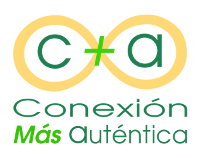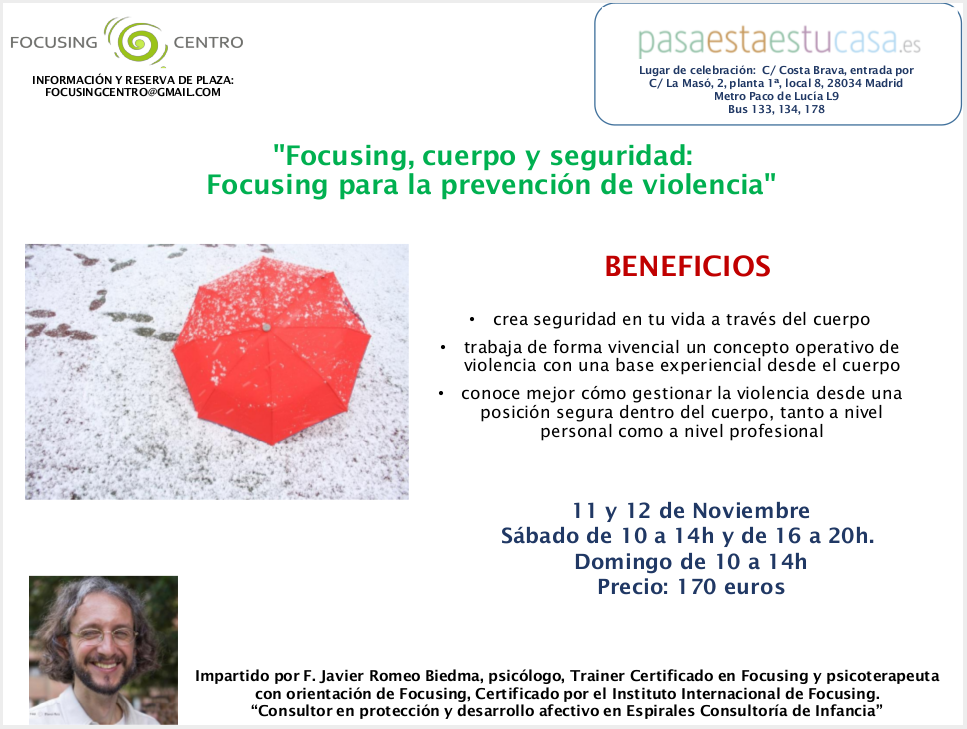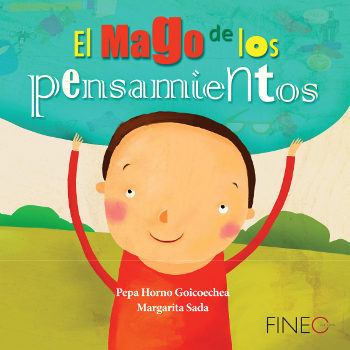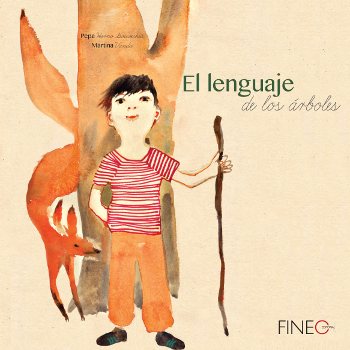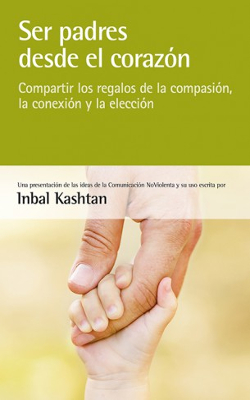Label: For parents
Artículo “We accompany with the person that we are” within the initiative “Renewing from within”
15 September 2021.
Tags: Agenda actual, Interpersonal communication, Education, CI Spirals, Focusing, My Classifieds, For parents, Psychotherapy, Therapy, Experiences
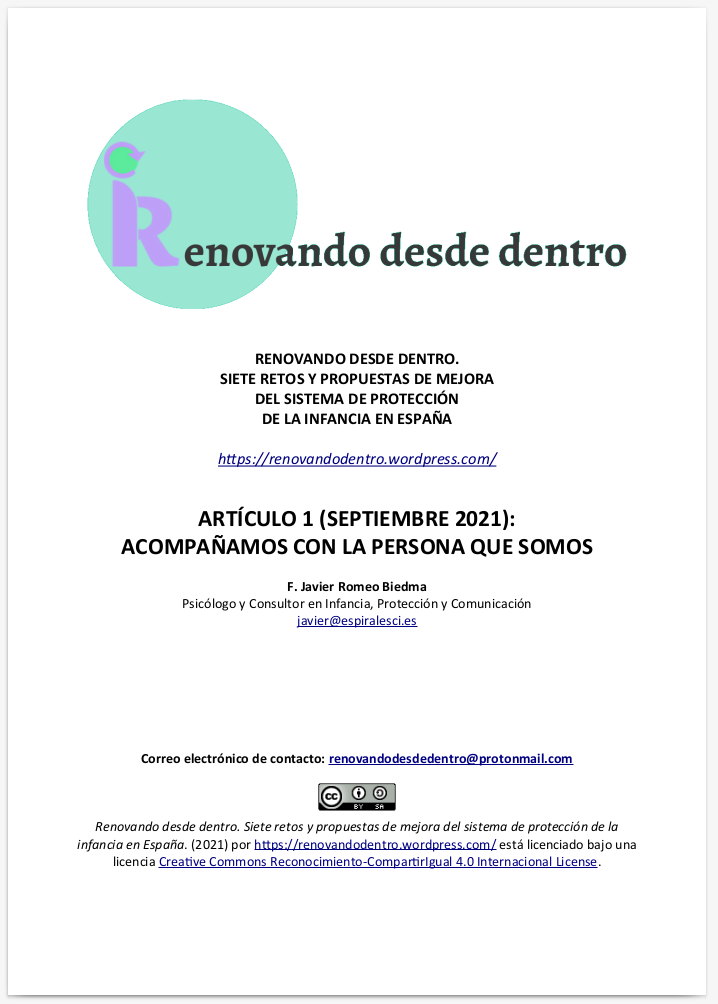 Part of my work as a psychologist and companion in personal and organizational processes consists of finding ways to communicate complex messages through metaphors and analogies.. In the initiative “Renewing from within”, that I already presented in this other post, we set out several challenges and proposals to improve the child protection system, girls and adolescents in Spain (And in the rest of the world).
Part of my work as a psychologist and companion in personal and organizational processes consists of finding ways to communicate complex messages through metaphors and analogies.. In the initiative “Renewing from within”, that I already presented in this other post, we set out several challenges and proposals to improve the child protection system, girls and adolescents in Spain (And in the rest of the world).
This month I have collaborated with the article “We accompany with the person that we are”, that uses analogies between the measures we are taking in the face of the pandemic and the aspects we need to take care of when accompanying children, girls and adolescents who have suffered a lot. It is a way of bringing awareness to our way of being and doing, both personally and professionally.
And you will see that, as usual, I insist on the importance of training in trauma and remember the value of Focusing, I find it a very useful tool on a day-to-day basis..
I would love to know what you think and how you live it.
Video series for children, girls and adolescents made for UNICEF Spain
22 July 2020.
Tags: CI Spirals, Focusing, My Classifieds, My videos, For Teens, For boys and girls, For parents, Videos, Experiences
Since the beginning of the pandemic, many children's organizations have struggled to create resources. From Spirales Consultoría de Infancia we have prepared several different materials.
In this blog post I want to share some videos that are also relevant to what I am sharing here, for many reasons.
- They put forward messages that are clear and broad enough to discuss with children, girls and adolescents on the COVID-19 pandemic, so that they have clues about what is happening to them.
- They propose a work on body awareness: from the model of the three intelligences to coming into contact with the breath, with the tension or with the different sensations. It is not Focusing, but aim for that sensitivity.
- They are in Spanish, but also in French and Moroccan Arabic. I was excited to use in these videos these two languages that have served me so much to communicate when I lived in Morocco and with migrant adolescents in Spain.
I leave you the videos below:
I hope you find them interesting.
Taller “Focusing, body and safety: Focusing for the prevention of violence” in Madrid 11 and 12 of November 2017
12 November 2017.
Tags: Agenda filed, Education, CI Spirals, Focusing, Focusing in Spain, Focusing en Madrid, Training, For parents
Raise awareness of the body as a place of protection against violence is one of my key professional priorities. This workshop, “Focusing, body and safety: Focusing for the prevention of violence” I combine my job more than a decade dedicated to protecting children against various types of violence (the last eight years Spiral Consulting Children) with technical power Focusing, which it has helped me both personally and professionally.
Focusing may provide a new way to create security in our lives through the body. All people we want to be treated well, with respect and consideration. However, witness violence at various levels frequently. If we are also in contact with children, and adolescents, both in our families and from our work, we see many situations of violence and ask ourselves how to prevent it. This workshop is geared to work so vivencial an operational concept of violence with an experiential base from the body. So we can identify violence from our body while we can act more clearly and protective way in our lives and in our professional field.
This workshop is aimed at people interested in learning more about how to manage violence from a safe position within the body, both personally and professionally (social intervention specialists from psychology, psychotherapy, social work, educación…). Focusing prior knowledge they are not needed (although it will be an advantage). This workshop is a recognized monograph for obtaining the Diploma in Focusing of Focusing Spanish Institute.
Date: sábado 11 November 2017 of 10:00 a 14:00 and of 16:00 a 20:00 and Sunday 12 November 2017 of 10:00 a 14:00.
Place: Space “Spend this is your home”
C / Costa Brava, input C / La Masó 2, plant 1, local 8
28031 Madrid
(Metro Paco de Lucía, line 9; buses 133,134 and 178)
Price: 170 euros.
More information and registration Focusing Centro, organized training: focusingcentro@gmail.com
I hope that is of interest,
[Original entry 16 October 2017, actualizada a 12 November 2017, date formation].
Story “The Wizard of thoughts” Pepa Horno on listening to the body by caressing
11 July 2016.
Tags: Education, CI Spirals, Focusing, For boys and girls, For parents, Textos Focusing, Other Texts
In line continue to celebrate the publication a year ago tales of Pepa Horno, my good friend and partner in Spiral Consulting Children (where we work on issues of affective education in childhood), This complements entry the previous one, referring to his book The language of trees. this story, The Wizard of thoughts, It has been published by the Editorial Phineus with illustrations Margarita now.
Pepa same account his intention for this book with the following words:
The Wizard of thoughts He speaks of fondling, and how caresses and massages serve to emotional self-regulation, for these children than adults say they still do not stop, who fail to sort their thoughts, or silence them or concentrate ... For these children have a "magic" trick to put some order within himself. In those thoughts that basically are but the fruit of his extraordinary sensitivity.
To this I add that it is a story that can be adapted perfectly to teach Focusing boys and girls for the following reasons:
- Presents a positive and welcome sight of thoughts, sensations, feelings, emotions and experiences in general with children (and we also have adults): what is within us it makes sense if you provide adequate listening.
- Children can do concrete things to pay attention to their internal experiences, so these calm down (and, although not explained in the story, Also to be deployed), and those who are around him can accompany.
- Internal experiences are accompanied by more effectively with any physical action. Pepa proposed in the story caresses the areas involved (head of the protagonist, in this case), but explained on the last page, “Words for the soul of adults”, there may be many other ways, whenever it involves the body.
So I heartily recommend this book as a way to present the Focusing in a manner adapted to children.
I hope you will like it as much as me,
Xavier
Story “The language of trees” Pepa Horno to accompany the child duel (and for all ages)
13 June 2016.
Tags: Mourning, CI Spirals, For boys and girls, For parents, Other Texts
It has recently completed the first anniversary of the publication of the story The language of trees of Pepa Horno, my dear friend and partner in Spiral Consulting Children (where we work on child protection issues). this story, published by the Editorial Phineus and illustrated by Martina Vanda, had several presentations, and the first was in the Book Fair of Madrid 2015 at this time, so I thought proper to remember with this blog.
Pepa presents the book as follows:
The language of trees about death. Or rather on the thread of love that binds either side of life. He speaks of people who have the heart divided, "Half on land and half in heaven", and it is written for many children (those who are children now and those other children hidden under the skin of adults) with his heart so.
I want to highlight three aspects that recommend this story (and that is why I have already given more than one occasion):
- The importance of discovering a symbolic link to the deceased, can be grown in life or after death has occurred. Never too late to create a ritual that produces us feeling connected to those we still alive.
- Body dimension bereavement, masterfully displayed targeted. Take a walk, move around the field, gestures with the body… It helps us to better process losses, regardless of age.
- Tenderness that permeates the work invites us to take care of the relationship in every situation of mourning with all children: with those who are age, and who took our children and girls indoor inside (and also they need your attention).
For all this and much more is a book I consider recommended reading, and especially to have on hand when losses occur in the environment.
Hope you enjoy it as much as the IM.
Xavier
my article “Play the yes’ in the 'no'” (2011)
14 December 2015.
Tags: CNV, Interpersonal communication, Education, CI Spirals, My Classifieds, For parents, Texts CNV
This weekend I had the honor of participating in the I Congress on Emotional Education Navarra, organized by Formed parents. It was a conference organized with great interest, with great care and a good dose of courage. My presentation was specifically about “Affective education that protects against sexual abuse”, one of the themes that work from Spiral Consulting Children, of which I am a founding member. But in the end there was a panel discussion with questions for all speakers, we were sharing with the moderation of Sonsoles Echevarren, journalist from Diario de Navarra. It was a very interesting time, and although the questions were addressed to each speaker, at the end there were many in which we participate several more. In this context a very interesting question arose, “How do you listen to a child who refuses to leave the park?”. interesting and valuable answers were given, and I brought my contribution: “Listening yes’ in the 'no'”.
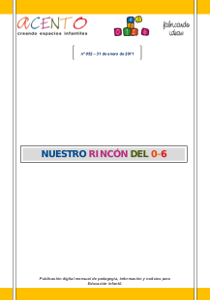 Rescue in this blog because my article 'Listen to “yes” in the “no”‘, which it was published in the number 52 (January 2011) Magazine Our corner of 0-6, published by ACCENT (He continues no longer releasing new numbers, although still available). This article development more broadly what I argued then: When a person (and a boy or girl is also a person) dice “no”, He is saying “yes” many things, and if we listen to the entire message, we can create a deeper connection and find a satisfactory solution for all parties. The article begins:
Rescue in this blog because my article 'Listen to “yes” in the “no”‘, which it was published in the number 52 (January 2011) Magazine Our corner of 0-6, published by ACCENT (He continues no longer releasing new numbers, although still available). This article development more broadly what I argued then: When a person (and a boy or girl is also a person) dice “no”, He is saying “yes” many things, and if we listen to the entire message, we can create a deeper connection and find a satisfactory solution for all parties. The article begins:
mother, two and a half years, She does not want her coat to go outside. Joseph, four years, You do not want to lose the swing to go home. Irene, of five years, He does not want to go to sleep. Why not do those things that as adults we seem perfectly reasonable?
And what do we do next? ¿We yield and do what they want? Then we feel bad because we are not working to their education, and also it gives us the feeling of leaving aside what we as people also want. Would you force them to do what we want? Then we have guaranteed discussion and bad environment for a long time, long term and we are teaching them that in the end the important thing is to have power or strength, and that dialogue only serves when it is weak. In my personal and professional experience there is a third way, based on a deeper communication in each of these situations. And one of the skills that we developed in the workshops I facilitate is the ability to listen to what they say “yes” our children when they say “no”.
Download the full article “listen to the “yes” in the “no”‘
Hope you find it interesting.
Xavier
My article on “Children and death”
31 October 2015.
Tags: Interpersonal communication, Mourning, Education, My Classifieds, For boys and girls, For parents, Psychotherapy, Therapy, Other Texts
In these final days of October the theme of death more frequently in the lives of children arises. Since the celebration of the Day of the Dead in certain families to all events of a different color of the Halloween, the reality is that it is a time when children can ask questions about death, and it is convenient to have prepared certain attitudes and listening spaces and answers.
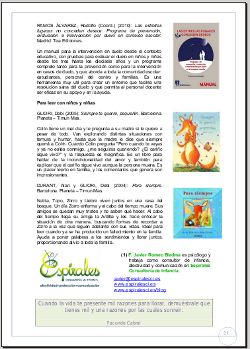 I wrote in 2011 an article that recovery here, “Children and death”, to remember some useful clues. In the article, published in the journal Our corner of 0-6 - ACCENT directed Childhood Education, They explore three key areas:
I wrote in 2011 an article that recovery here, “Children and death”, to remember some useful clues. In the article, published in the journal Our corner of 0-6 - ACCENT directed Childhood Education, They explore three key areas:
- The perception of death at different ages (between zero and six years, which it is the subject of the magazine).
- Some basic guidelines to accompany children to death.
- recommended reading, separate readings for families and professionals and stories to read with children.
Article framing and start with this paragraph:
For a long time it was thought that children did not suffer grieving process until older ages. However, research in the field of addiction have shown that pass through grieving process from the earliest ages, although it does not manifest like adults until later. Therefore it is necessary to speak of death (and not hide it for fear of damaging them) when it happens (or when it will happen, in the case of terminally ill), to understand 1) that the person is definitely going and 2) that the person does not leave voluntarily, and also so they can say goodbye, because if these concepts are not clear and not a farewell occurs, a pathological mourning may appear. And so it is important that we listen and pay attention to what happens inside when the death occurs in their lives.
[cite as: ROMEO BIEDMA, Francisco Javier (2011): "Children and death" Our corner of 0-6 - ACCENT, 60, 17-21.]
I hope that these reflections will serve to accompany this topic to children in your environment. Death is an inevitable part of life, and how better integrate, They will live more fully, our children and us.
I wish you a commemoration consciousness,
Book “Parenting from the heart” de Inbal Kashtan
6 May 2015.
Tags: CNV, Interpersonal communication, Education, For parents, Texts CNV
“According to my experience, the practice of Nonviolent Communication with young children is more a matter of what happens inside me-that way I talk to myself about what is happening with me and my son to negotiate. However, I also want to express in words my understanding of what is happening for both, at least part of the time, even if I think my child does not understand the language, because it helps me connect with the feelings and needs of both. That, at the same time, helps me calm down and find strategies that do work for both. I also want to speak aloud because I think this is the way to acquire language and emotional literacy.” (Inbal Kashtan, Parenting from the heart, page 38)
When people involved in my interpersonal communication workshops have sons or daughters who are in childhood or adolescence, or work with those ages, typically they arise “Yes, This way of communicating is very well among adults, but to see how I tell my son / niece / student / daughter…”. If time, practice communicating with children in training, but often I can only indicate possible suggestions and explorations. We now have a new resource, that lets you family communication to another level. This is not only to resolve conflicts (that also), but to create a more authentic connection type, deeper and more powerful, that prepares children for more resiliently life.
With this sensitivity Inbal Kashtan wrote his book Parenting from the heart. Share the gift of compassion, connection and choice, published last year in Castilian by Editorial Acanto. Inbal Kashtan, forming Nonviolent Communication and mother of a child, he led for years the work of Nonviolent Communication within the family, especially from parents to their children. Inbal died in September 2014, but his legacy continues baynvc (an organization that disseminates Nonviolent Communication from San Francisco Bay, California, of which he co-founded) and his writings (in addition to this book, You can read some of his articles about family communication in English baynvc). This blog also wants to be an acknowledgment and a tribute to his life and work.
I recommend this book both for those who come for the first time to Nonviolent Communication and for those who want to deepen their practice with children. Hope you enjoy the.
Xavier
Restorative Practices at school, a new way to resolve conflicts
5 May 2015.
Tags: CNV, Interpersonal communication, Education, In English, For parents, Texts CNV, Other Texts, Videos, Webs
Most disputes can be resolved in a satisfactory and beneficial way for all parties, provided that the necessary resources and time are dedicated. That's my personal and professional experience years learning, practicing and transmitting Nonviolent Communication. It's as basic (not easy) as the necessary conditions for that resolution occurs. For me there are several must-haves, which can be summarized as follows:
- An appropriate methodology, to allow all parties involved feel safe and respected in their rights.
- Professionals with experiential training in mediation and deep listening skills and “translation” messages to make them easier to listen to each person.
- A supportive community restorative processes, devoting time, spaces, human Resources, training…
- People willing to resolve conflicts in a way that ultimately all parties feel heard and that all parties leave satisfied with the solution.
So for me it is a joy to share the resources developed by a large community of people in the neighborhood are Gotleu in Palma de Mallorca (Mallorca), They are collecting and how they have worked each of those elements.
In this video you can see how they have been involved, with the revitalization of Institute for Coexistence and School Success (the Institute for Coexistence and School Success in Castilian) Government of the Balearic Islands, from the faculty of schools of Primary Education, Elementary and Secondary, students of all ages, the families, and Social Services, police, University and other significant social groups. A mosaic of voices, We make us an idea of the experiences of the creation of that network security in a socially vulnerable environment, and we see some results.
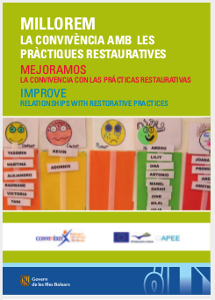 For a more systematic view, is the publication containing the fundamentals. Published in Catalan, Castilian and English as part of a European project this subject, the Guide to improve coexistence with Restorative Practices / Guide Mejoramos coexistence with the practices restorative develops the theoretical aspects of Restorative Practices, more accurate data and provides concrete examples and suggestions for further reading for more information.
For a more systematic view, is the publication containing the fundamentals. Published in Catalan, Castilian and English as part of a European project this subject, the Guide to improve coexistence with Restorative Practices / Guide Mejoramos coexistence with the practices restorative develops the theoretical aspects of Restorative Practices, more accurate data and provides concrete examples and suggestions for further reading for more information.
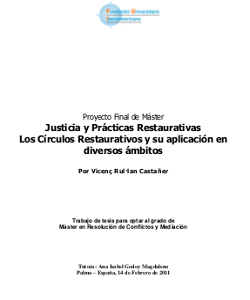 And to deepen the Restorative Circles, a practice of conflict resolution originated in the social dimension Nonviolent Communication, you can read the interesting monograph Justice and Restorative Practices. Restorative Circles and their application in various fields, written by Vicenç Rul·lan, a trainer who I have the pleasure of meeting, on the video and in the Guide, and he is a member of the Association of Restorative Justice Practices and Islands (to page Castilian and in Catalan, with several resources more). A good introduction, to further deepen this particular model. And you can also watch videos (English) on the official website of the creator of the Restorative Circles, Dominic Barter, RestorativeCircles.org.
And to deepen the Restorative Circles, a practice of conflict resolution originated in the social dimension Nonviolent Communication, you can read the interesting monograph Justice and Restorative Practices. Restorative Circles and their application in various fields, written by Vicenç Rul·lan, a trainer who I have the pleasure of meeting, on the video and in the Guide, and he is a member of the Association of Restorative Justice Practices and Islands (to page Castilian and in Catalan, with several resources more). A good introduction, to further deepen this particular model. And you can also watch videos (English) on the official website of the creator of the Restorative Circles, Dominic Barter, RestorativeCircles.org.
Who have done some training of interpersonal communication with me you have seen that ground mention this issue of Restorative Practices. I hope these resources illustrate a little better what you have heard me and I hope to awaken your creativity and your imagination to continue discovering more effective and deeper ways to resolve conflicts in the educational environment, and in any other area.
Xavier
I understand how psychotherapy: Key ideas and a video to illustrate
3 March 2015.
Tags: Interpersonal communication, For Teens, For boys and girls, For parents, Psychotherapy, Therapy, Videos
Explain to anyone what the psychotherapy, and especially what I understand as psychotherapy, It is always a challenge. And when this is added we want to explain it to children, or adolescents, It finds it harder. And yet, psychotherapy is perfectly natural: to recover the lost balance (and thus regain control of their lives).
As human beings we are basically ready to grow healthily. It would be natural that all people might be moving through the various stages of childhood, adolescence and adulthood step. It would be natural, well, on the one hand to incorporate the nutrient elements psychologically (body, emotional, cognitive, procedural, attitudinal…) and on the other hand trying to overcome the painful and even harmful elements with new learning (of the kind “This attitude of mine and does not serve me” The “I do not ever want to deal with a person who does not respect me”). However, Sometimes things go wrong (a little or a lot), and you need to do something to move forward with health. Psychotherapy is a good way to integrate and heal the experiences, regaining enthusiasm for our life.
The video “Garra rufa (Doctor Fish)”, It was developed by a group of students of animation Sheridan College under the name of Frozen Mammoth Productions, among others Timothy Chan and Eunice Hwang, and we can serve as the starting point to begin reflection.
This video seems a good example to explain several key points that I like to make clear to children and adolescents, and also adults who pose make a psychotherapy:
1) The work of those who act as therapists is recover the healthy and alive who's inside we see. We all have something valuable by the mere fact of its existence, although sometimes very harmful situations have occurred, the external internal.
2) To recover what we have healthy and alive variety of means, Suitable whom we have before (and at his age, their likes, his style, what has lived…). always we hear, often we ask, and sometimes we propose activities (how to draw, or perform specific activities, or trying different techniques). Our goal is to give back to the person that he is healthy and alive, but cleaner and stronger so you can move your life.
3) We know that the process takes time. If we take weeks, months, years, living with painful, we will also need time to heal dedication. It is true that there may be discoveries that we radically change our experience at a time, as it appears in the video, but that only happens when we have been investigating our inner enough. And it takes time for that experience is put in place globally in our lives.
4) And we know that The process involves an effort. It's like cleaning a wound that has become infected, It may involve momentary pain, but the improvement is evident in the long run. The effort affects people who are around who comes for consultation. For children, and adolescents, the effort affects the family, and from my vision of psychotherapy I intervene only if there is a clear and strong commitment from family (especially primary caregivers).
5) As in the video, as therapists know well the experience because We have lived our own psychotherapy with our own challenges. Of course we have specific training, broad and deep, but we do not consider exceptional people. We are simply people who have watched our pain and we have learned to look at the pain of others constructively and from new perspectives.
I hope the video will serve you to have some clearer ideas about psychotherapy, especially when you please explain the your children, and adolescents.
Xavier
